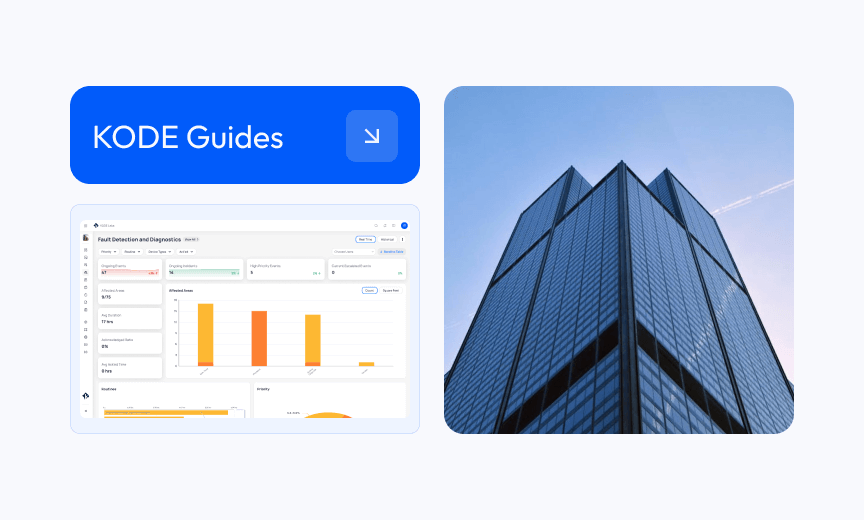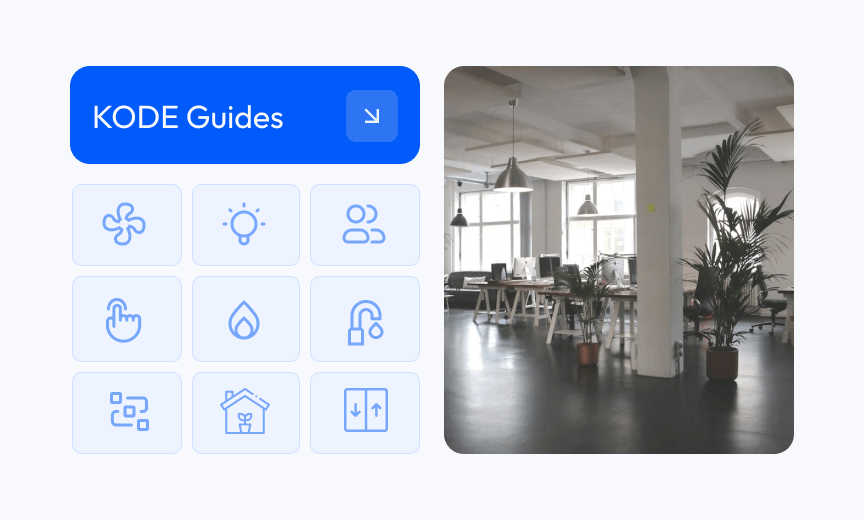By KODE Team
On this page
Sign up to our newsletter
Subscribe to receive the latest blog posts to your inbox every week.
By subscribing you agree to with our Privacy Policy.

Landmark Law of Building Performance Standards (BPS): LL97
The most aggressive and ambitious plans for reducing emissions comes from New York City, with Local Law 97. This law set the foundation for their goal of net zero building emissions by 2050. Seeing the biggest city in the nation introduce LL97 has kicked off a wave of such standards across the country.
There are currently over a dozen cities and states across the US, in addition to the federal government, that have adopted some form of building performance standards; which are used as a way to reduce carbon emissions and energy use in residential and commercial buildings.
Which states have BPS?
- Washington
- Oregon
- Colorado
- Maryland
Did you know?


Overview
Local Law 97 was included in the Climate Mobilization Act, passed by the City Council in April 2019 as part of the Mayor’s New York City Green New Deal. Under this law, most buildings over 25,000 square feet will be required to meet new energy efficiency and greenhouse gas emissions limits by 2024, with stricter limits coming into effect in 2030.
The goal is to reduce the emissions produced by the city’s largest buildings 40 percent by 2030 and 80 percent by 2050.
Penalties: An owner of a covered building who submits a report indicating that their building exceeded its annual building emissions limit will be liable for a civil penalty equal to the difference between the building emissions limit for that timeframe and the reported building emissions for that year.
When does it take effect?
May 1, 2025: First compliance report due for most covered buildings, including multifamily buildings with 35% or greater rent regulated units and houses of worship. The report reflects emissions in the calendar year 2024.
Who does it impact?
- Buildings that exceed 25,000 gross square feet;
- Two or more buildings on the same tax lot that together exceed 50,000 square feet;
- Two or more buildings owned by a condo association that are governed by the same board of managers and that together exceed 50,000 square feet.
Penalty for non-compliance
Beginning in 2025, an owner of a covered building who has submitted a report pursuant to section 28-320.3.7 which indicates that such building has exceeded its annual building emissions limit will be liable for a civil penalty.
For each metric ton of carbon over the limit, the building needs to pay $268.

Penalty examples
Multi-purpose building
If we take a sample multi-purpose building of 428,000 sqft. and run it through the NYC LL97 Calculator based on the buildings emissions for the year 2019 with KODE OS providing up to 20% in energy savings, the building could have avoided $55,745 in penalties.
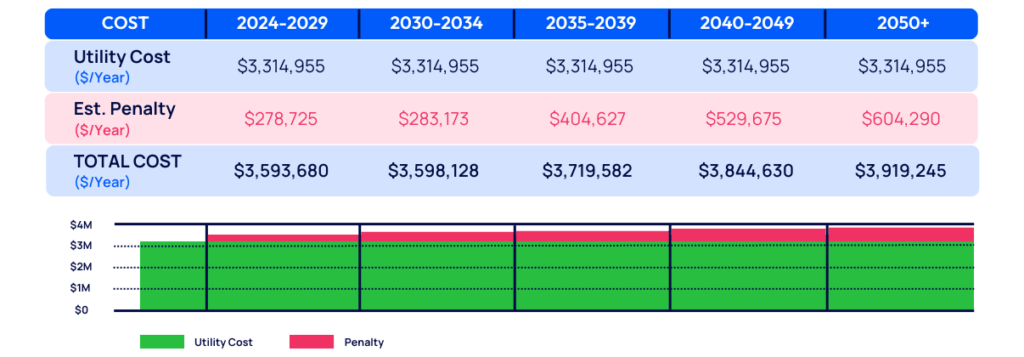
Office building
In another example, if we take a sample office building of 2,300,000 sqft. of which 40,000 are meeting spaces and 20,000 dedicated to a data center, run it through the NYC LL97 Calculator, based on the average emissions for a building of this size with KODE OS providing up to 20% in energy saving, the building could avoid $126,073 in penalties during the period 2030-2034.
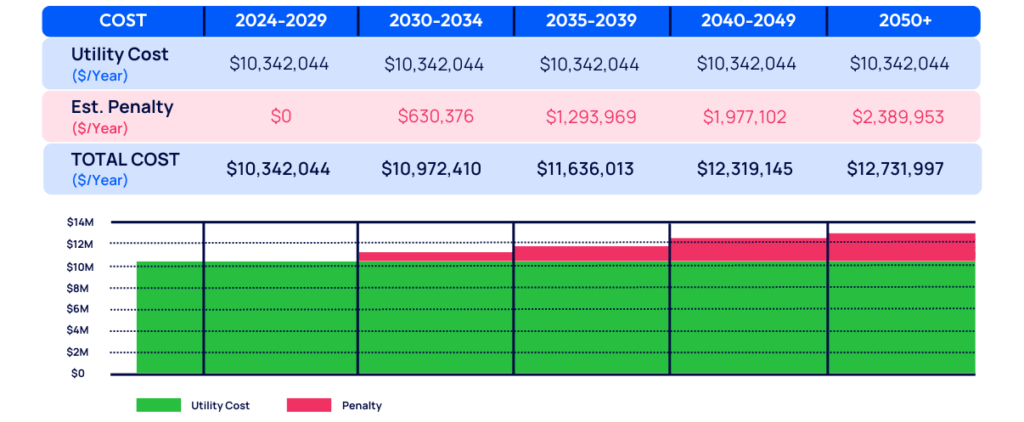
The City estimates that about 20-25% of buildings will exceed their emissions limits in 2024, if they take no action to improve their building’s performance. In 2030, if owners take no action to make improvements, approximately 75-80% of buildings will not comply with their emission limits. In addition to the civil penalties set forth in Local Law 97, the Buildings Department may also issue violations for non-compliance with the law.
These violations have yet to be formally defined by the City.
Building emission limits!
Limits are based on property types from the US Environmental Protection Agency’s Energy Star Portfolio Manager (ESPM) tool, which reflect actual energy consumption patterns in New York City buildings.
Owners whose emissions limits have been lowered (made more stringent) have the option of following either the original limits based on New York City Building Code occupancy groups, or the limits based on ESPM property types, for calendar years 2024 and 2025.
Beginning in 2026, all owners must report their emissions using the ESPM property types.
This Document outlines the Emissions limits by ESPM property type. Note that the law sets different emissions limits based on the occupancy group of a building, so some buildings may need to make more changes than others to comply.
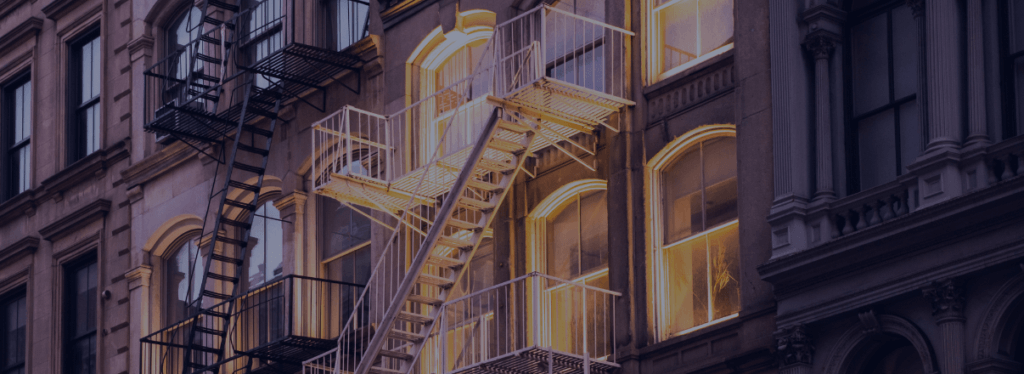
KODE OS: Impacting Local Law 97
KODE OS has the ability to assist property owners and managers in New York City in fulfilling their obligations under Local Law 97. It streamlines the process of data collection, standardization, and reporting, ensuring that buildings can proactively manage and reduce their carbon emissions and energy consumption in compliance with L.L.97 regulations.
Here’s a list of KODE OS’ capabilities related to L.L. 97:
Data collection, orchestration, analysis & reporting
- Ensure that all data relevant to Local Law 97 compliance is standardized and normalized. This makes the data maintain integrity and accuracy.
- Check for discrepancies, missing entries, and errors in the data to guarantee that it aligns with the reporting requirements outlined in LL97. Create data accuracy and variance reports to identify and address inaccuracies and variances in your energy and emissions data.
Data orchestration, reporting & sharing
- Data from all integrated systems and devices is made available for custom reports creation.
- Data-sharing is automated between KODE and other third-party platforms, helping you save time and report ESG data more accurately and efficiently.
Energy consumption & greenhouse gas (GHG) reports
- Create detailed energy consumption reports that can be generated on a monthly, quarterly, and annual basis.
- Energy consumption reports offer insights into your building’s energy usage patterns, helping you measure its performance and identify areas for improvement to meet LL97 energy efficiency goals.
- Our energy module assists in the collection and calculation of GHG emissions data, making it easier to compile and submit the required reports to city authorities as per Local Law 97 mandates.
Energy savings with FTT, FDD, and Energy Optimizations
- FTT you’re able to schedule tests for equipment functionality, and with FDD you can see a collection of events and alarms to be able to find areas to perform preventative maintenance and pinpoint issues in a building.
- Our Energy Optimizations use machine learning to determine how to turn on and off the systems without sacrificing comfort.
- It optimizes equipment performance, extends its lifetime, and conserves energy.
Real-time carbon emissions tracking
- Enable real-time tracking of carbon emissions from your building.
- Continuously collect and process data to calculate and report carbon emissions on an hourly basis. Bring in real time meter and utility bill data.
- This feature is critical for meeting Local Law 97’s requirements for monitoring and reducing carbon emissions.
Local Law 97 compliance monitoring
- Monitor your building’s emissions and energy consumption indefinitely.
- Track your building’s performance against the emissions limits set by Local Law 97, ensuring that you remain compliant over time.
- Alerts and notifications can be set up to prompt action if non-compliance is detected.
Occupant engagement & behavioral change
- Engage building occupants through user-friendly interfaces, dashboards, and mobile apps, providing real-time feedback on energy usage and emissions.
- Empower occupants to adopt energy-saving practices, reducing energy consumption and emissions at the individual level.
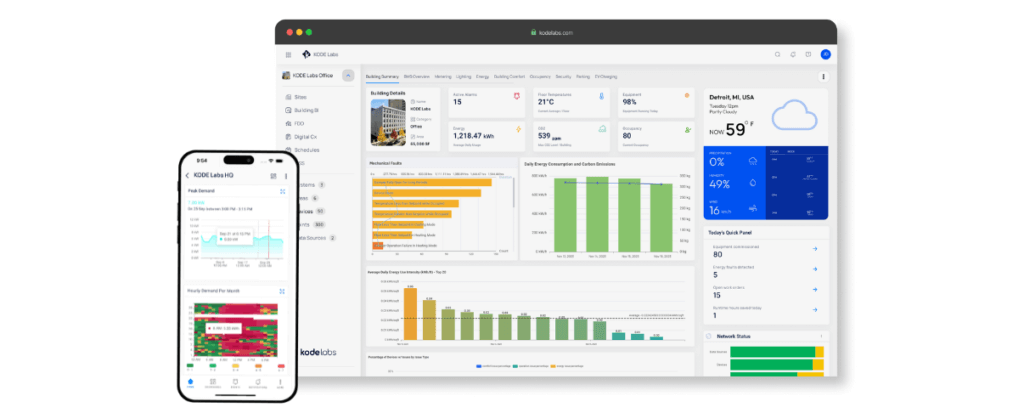
Term Definitions
Building emissions
Greenhouse gas emissions as expressed in metric tons of carbon dioxide equivalent emitted as a result of operating a covered building and calculated in accordance with rules promulgated by the department in consultation with the mayor’s office of long term planning and sustainability.
City building
The term “city building” means a building that is owned by the city or for which the city regularly pays all of the annual energy bills.
Exception: The term “city building” shall not include any senior college in the city university of New York system.
Covered building
The term “covered building” means, as it appears in the records of the department of finance of NYC, (i) a building that exceeds 25,000 gross square feet or (ii) two or more buildings on the same tax lot that together exceed 50,000 gross square feet (9290 m2 ), or (iii) two or more buildings held in the condominium form of ownership that are governed by the same board of managers and that together exceed 50,000 gross square feet (9290 m2 ).
- An industrial facility primarily used for the generation of electric power or steam.
- Real property, not more than three stories, consisting of a series of attached, detached or semi-detached dwellings, for which ownership and the responsibility for maintenance of the HVAC systems and hot water heating systems is held by each individual dwelling unit owner, and with no HVAC system or hot water heating system in the series serving more than two dwelling units, as certified by a registered design professional to the department.
- A city building.
- A housing development or building on land owned by the New York city housing authority.
- A rent regulated accommodation.
- The real estate owned by any religious corporation located in the city of New York as now constituted, actually dedicated and used by such corporation exclusively as a place of public worship.
- Real property owned by a housing development fund company organized pursuant to the business corporation law and article eleven of the private housing finance law.

